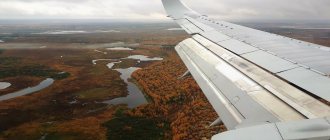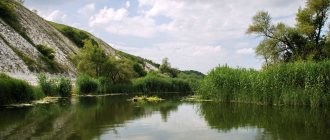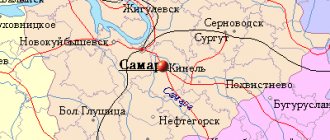Poronaysk
(Sakhalin region)
OKATO code:
64240501
Founded: City since:
1946 City of regional subordination
Center:
Poronaisky district
Urban-type settlements, population as of 01/1/2021
| Vakhrushev | 1.7 |
| The city was formerly called: | ||
| Sikuka | 1946 | |
| Telephone code (reference phone) | |
| 42431***** | — |
Deviation from Moscow time, hours:
8
Geographical latitude:
49°13′
Geographical longitude:
143°06′
Altitude above sea level, meters:
3 Sunrise and sunset times of the Sun and Moon in the city of Poronaysk
Poronaysk city
After the liberation of Southern Sakhalin in September 1945, civil affairs departments were organized by order of the command of the Far Eastern Military District. The Sikuka district included the civil affairs departments of the city of Sikuka and three rural (rural) districts: Chirie, Nairo, and Tomarikisi. Until January 1946, civilian departments existed alongside Japanese administrative authorities. By a resolution of the Military Council of the Far Eastern Military District of December 30, 1945, the Japanese provincial administration, as an independent administrative governing body, was reduced. By the Decree of the Presidium of the Supreme Soviet of the RSFSR dated June 5, 1946 “On the administrative-territorial structure of the South Sakhalin Region,” all district centers were renamed, and the Poronaisky district was formed with the center in the city of Poronaisk (formerly Sikuka).
In the context of the transition from hostilities to peaceful life, civilian administration was entrusted with the responsibility of ensuring order, nationalizing and organizing the work of industry, transport, trade, agriculture and procurement; organization of the work of communal and household institutions, registration of the civilian population, management of the work of public education, health care, culture and other functions to normalize life, to introduce Soviet laws. Direct management of the sectors of the national economy was carried out by civil administration through its departments.
By the decision of the Sakhalin Regional Executive Committee of February 26, 1947, all district and city departments for civil affairs were liquidated with the transfer of all affairs, staff and property to the newly created district and city organizational executive committees.
The Poronaysk City Executive Committee was formed by decision of the Sakhalin Regional Executive Committee 139 of April 22, 1947.
By Decree of the Presidium of the Supreme Soviet of the RSFSR No. 741/30 of August 31, 1956, the Poronaisky City and Poronaisky District Councils were united into the Poronaisky City Council of Workers' Deputies. The territory of the districts has been preserved as a territorial unit, township and rural Councils, and rural Councils of Workers' Deputies have been transferred to the subordination of the city Council.
Since October 1977, the Councils of Working People's Deputies have been renamed into Councils of People's Deputies.
Based on the Resolution of the Presidium of the Supreme Council of the RSFSR “On the temporary regulations on the chairmen and presidiums of local Councils of People's Deputies of the RSFSR”, by the decision of the first session of the City Council dated March 30, 1990, the Presidium of the Poronaysk City Council of People's Deputies was formed. At the same session, 8 permanent commissions of the City Council were formed.
By the decision of the first session on May 3, 1990, the structure and staff of the City Council were approved, and on May 17, 1990, a department for working with Councils was formed.
In accordance with the Law of the RSFSR “On Local Self-Government in the RSFSR”, by the decision of the Eighth Session of the City Council on October 31, 1991, the presidium of the city Council of People's Deputies was dissolved and a small Council was elected. At the same session, new regulations for the work of the city Council of People's Deputies were approved. Based on the approved regulations, the standing commissions of the City Council, formed by the first session, were abolished, except for the mandated one. The same decision established 4 new permanent commissions of the City Council.
On the basis of Decree of the President of the Russian Federation No. 1760 of October 26, 1993 “On the reform of local self-government in the Russian Federation,” the Poronaisky City Council of People's Deputies was liquidated.
Based on the Resolution of the Supreme Council of the RSFSR dated July 6, 1991 “On the procedure for enacting the Law of the RSFSR”, Art. 3 of the Decree of the President of the RSFSR of August 22, 1991 No. 75 “On some issues of the activities of executive authorities in the RSFSR”, Art. 4 and Resolution of the Regional Governor No. 49 of December 12, 1991, having assumed the position of the first mayor of the Poronaisky district, Vladimir Mikhailovich Shapranov decided to terminate the powers of the executive committee of the city Council of People's Deputies from December 12, 1991.
The municipal entity "Poronaisky District" was formed in accordance with the decision of the Poronaisky District Assembly No. 132 of December 16, 1996. The municipal formation "Poronaisky District" is given the status of an urban district in accordance with the Law of the Sakhalin Region No. 524 of July 21, 2004 "On the borders and status of municipalities of the Sakhalin Region".
In accordance with the decision of the Poronaysky District Assembly of Deputies dated May 19, 2006 No. 68, the municipal formation “Poronaysky District” was transformed into the municipal formation of the urban district “Poronaysky”.
The date of formation of the municipal formation of the urban district "Poronaysky" is considered to be June 13, 2006 (the date of registration of the Charter of the municipal municipality "Poronaysky" by the Main Directorate of the Ministry of Justice of the Russian Federation for the Far Eastern Federal District). The official name of the municipality is the municipality of the Poronaisky urban district.
On July 27, 2012, by merging the municipal district “Vakhrushev City District” and the municipal district “Poronaysky City District”, the Poronaysky City District Municipal District was formed.
On March 30, 1988, by resolution of the Council of Ministers of the RSFSR, the Poronaysky State Nature Reserve of federal significance was created. Located in the Poronaysky district, in the eastern part of Sakhalin Island within the most extended part of the Tym-Poronai lowland and the southern part of the Central Range of the East Sakhalin Mountains.
Map
| Poronaysk: maps |
Poronaysk: photo from space (Google Maps) Poronaysk: photo from space (Microsoft Virtual Earth)
| Poronaysk. Nearest cities. Distances in km. on the map (in brackets along roads) + direction. Using the hyperlink in the distance , you can get the route (information courtesy of the AutoTransInfo website) | |||
| 1 | Smirnykh | 61 (75) | WITH |
| 2 | Makarov | 70 (74) | YU |
| 3 | Shakhtersk | 73 () | Z |
| 4 | Uglegorsk | 77 (158) | Z |
| 5 | Krasnogorsk | 115 (228) | SW |
| 6 | Tomari | 178 () | SW |
| 7 | Tymovskoye | 184 (202) | WITH |
| 8 | Alexandrovsk-Sakhalinsky | 199 (258) | WITH |
| 9 | Sovetskaya Gavan | 206 (677) | Z |
| 10 | Vanino (Khabarovsk Territory) | 207 (638) | Z |
| 11 | Testaments of Ilyich (Khabarovsk Territory) | 207 (655) | Z |
| 12 | Oktyabrsky (Khabarovsk Territory) | 208 (645) | Z |
| 13 | Dolinsk | 212 (334) | YU |
| 14 | Chekhov | 214 () | SW |
a brief description of
Located on the eastern coast of Sakhalin Island, in the Tym-Poronaisky valley, at the mouth of the river. Poronay, on the shore of Terpeniya Bay in the Sea of Okhotsk, 288 km north of Yuzhno-Sakhalinsk. Railway station. Port.
Territory (sq. km): 7284
Information about the city of Poronaysk on the Russian Wikipedia site
Historical sketch
On the territory of modern Poronaysk, next to the village of Ainu, Nivkhs and others, a Russian settlement was founded in 1869 - the Tikhmenevsky post.
In 1905 it was ceded to Japan in accordance with the Treaty of Portsmouth (1905), which ended the Russo-Japanese War of 1904-05. Called Sikuka; the name is from the Ainu shikukka “to expand, to make wide”, which may be due to the location of the city at the mouth of the rather significant Poronai River (a hydronym from the Ainu poro “big, wide”, nai “river”).
In 1945 it was returned to Russia. Liberated on August 20, 1945 by troops of the 2nd Far Eastern Front during the Yuzhno-Sakhalin operation.
Since 1946 the city of Poronaysk; name after the river.
Economy
JSC - “Bumzavod”, “Poronayskcement”, “Stroydetal”, “Lesokombinat”, “Dairy plant”, “Poronayskmeasoproducts”, “Brewery”. Bread factory.
Garment factory, fishing collective farm. Fur farming state farm for breeding minks.
Coal mine "Lermontovsky".
In the Poronaisky district, vegetables are grown and cattle are raised.
Deposits of building stone, sand, clay, peat, etc.
Main enterprises
THERMAL POWER PLANTS
Sakhalinskaya GRES
694201, Sakhalin region, Poronaysk, Lermontovka
Offers:
Electric and thermal energy
COAL MINING
OJSC "Lermontovskoe"
694202, Sakhalin region, Poronaysk, village Vakhrushev, st.
Central, 50 Offers:
coal
Museums, galleries, exhibition halls
Poronaisky Museum of Local Lore 694240, Sakhalin region, Poronaisk, st. 40 let VLKSM, no. 9 Phone(s): (42431) 4-33-30
| Population by year (thousands of inhabitants) | |||||||
| 1959 | 21.6 | 1998 | 22.8 | 2008 | 16.7 | 2016 | 15.2 |
| 1967 | 23 | 2000 | 21.8 | 2010 | 16.5 | 2017 | 15.3 |
| 1970 | 23.6 | 2001 | 21.5 | 2011 | 16.1 | 2018 | 15.3 |
| 1979 | 24.7 | 2003 | 18.0 | 2012 | 15.8 | 2019 | 15.4 |
| 1989 | 26.0 | 2005 | 17.4 | 2013 | 15.5 | 2020 | 15.6 |
| 1992 | 26.1 | 2006 | 17.1 | 2014 | 15.3 | 2021 | 15.8 |
| 1996 | 23.9 | 2007 | 16.9 | 2015 | 15.3 | ||
Russian Bath Kholmsk
Industry The city's pulp and paper plant (built before 1945) and cement plant were closed and liquidated. The Poronai pulp and paper plant discharged most of the liquid waste from production into the Poronai tributary, the Chernaya River, which had a very negative impact on the ecosystem of the entire floodplain. Solid waste from the pulp and paper plant and coal-fired power plant was dumped into numerous waste heaps located north of the city. The leading role in the economy of the region is played by the fuel, energy and fishing industries. The fuel and energy complex is represented by enterprises of regional importance: the Sakhalin State District Power Plant, which provides electricity to most areas of the island, and the coal mining enterprise Sakhalinugol-7 LLC. In the city there is a fur farm "Poronaysky", in which minks and arctic foxes were raised. The state farm was awarded the Order of the Badge of Honor and was a multiple winner of the USSR Exhibition of Economic Achievements. Today, the Poronaisky Animal Farm does not breed mink and arctic fox, but only processes fish. Fish. A significant volume of all products produced falls on the fishing collective farm “Druzhba”. Also on the territory of the Poronaisky District there are more than 30 enterprises engaged in the fishing industry, the relatively large ones are: LLC "Musson", LLC "Bereg", LLC "Zaliv", r/k "Nevskoe". In 2008, the catch of fish and other seafood amounted to 24.1 thousand tons. The fishing industry enterprises of the city district took part in the 12th international specialized exhibition “Fish Industry 2008”, winning four medals and fifteen diplomas for the quality of their products. Food. Poronaysk has a developed dairy and baking industry. OJSC "Poronaisky Dairy Plant" (awarded with the sign "Leader of the Food Industry of the Sakhalin Region") produces whole and fermented milk products in tetra-packs, sour cream, ice cream, butter, cottage cheese, yoghurts with berry and fruit additives. The products are in demand in other areas of the region. OJSC "Poronaisky Bread Factory" provides the population of the region with bread and bakery products, confectionery products.
Business There are 191 retail trade enterprises, 12 public catering enterprises and 7 wholesale trade enterprises in the city district. The total turnover in 2008 amounted to 2011.5 million rubles. Construction After 20 years of stagnation, the construction industry began to work again in the late 2000s. Construction work in the district is carried out by the State Unitary Enterprise Poronaiskoe Road Repair and Construction Administration (DRSU), Remstroy LLC, Stroitel LLC, Teplostroy LLC, and Grazhdanstroy. In 2011, the first residential building with 12 apartments was commissioned.
Transport The city has a sea trade port at the mouth of the Poronai River. The federal highway Yuzhno-Sakhalinsk - Okha and the Yuzhno-Sakhalinsk - Nogliki railway (Poronaisk station) pass through the city. About 80% of the volume of cargo transportation in the district comes from road transport. There are 26 motor transport enterprises in the district, the largest of which are CJSC Poronayskaya Avtobaza, ATP, ATP-1, ATP-2, ATP-3. The city is connected by bus routes to the villages of Vostok, Leonidovo, Gastello, Tikhmenevo, Matrosovo, Malinovka, Zabaikalets and the Vakhrushev municipal district. A small part of the city, the so-called. Sachi district (Japanese: 佐知 Sachi), is located on the left bank of the Poronai River, in the southwest of the river island at the mouth of the river. There is no bridge across the mouth; communication with this area is carried out through a car-passenger ferry crossing. The narrow-gauge railway to the village of Trudovoye begins from Sachy.
Culture and education The city has a Central Library, a Museum of Local Lore, a Children's Art School, a Leisure Center, a Children's Creativity Center, and a Children's Art School. Educational institutions: vocational school No. 15, Technological Lyceum of Small Indigenous Peoples, five secondary schools, a correctional boarding school, an evening school for working youth. City Day has been celebrated since 2001, on every third Sunday in August. The Poronai folk choir was included in the Great Soviet Encyclopedia (Vol. 24, Part III, p. 477). Ethnographic ensemble of small peoples of the North “Mengume Ilga” - “Silver Patterns” (first director A. Ukrainsky). The group has repeatedly demonstrated folk art abroad (in Japan, Canada) and performed in Moscow. Since 1998, the team leader is E. Pannik.
Medicine The city has a Central District Hospital, a city clinic, a children's clinic, a railway clinic, a dental clinic, and several private dental offices.
Sports There is a children's and youth sports school, the Avangard sports complex, a chess club, a volleyball section, and a weightlifting section. Until the 1990s, there were several football teams from city enterprises that participated in the city championship; now there is one amateur club, Smena. Poronaisk hosted the Russian Open Cup in the Far Eastern Federal District in powerlifting (powerlifting) twice. Athletes from the Khabarovsk and Primorsky Territories, Amur, Magadan, Sakhalin regions and the Chukotka Autonomous Okrug took part in it.
Climate The city of Poronaysk is equated to the regions of the Far North. Poronaysk has a monsoon climate with frosty, clear winters and cool, rainy summers. Average annual air temperature - 0.6 °C Relative air humidity - 78.8% Average wind speed - 3.4 m/s
Interesting facts The Poronai River, at the mouth of which the city is located, was called the Karafut Amazon during Japanese rule. On May 29, 1940, former professional sumo wrestler, 48th yokozuna Taiho Koki, was born in Poronaisk (then Shikuka), then occupied by Japan. During his long career he won the Imperial Cup 32 times. In January 2015, the 69th yokozuna Hakuho, a citizen of Mongolia, won the Imperial Cup for the 33rd time and this unique record was broken. Hakuho, who continues to compete in professional sumo to this day, has 37 cups today. In 2014, a monument was erected to the sumo wrestler Taiho Koki, with the initiative and financial support of the Japanese side, which caused mixed reviews from city residents. On January 24, 1950, journalist, film journalist, biographer of I. G. Pryzhov and V. T. Shalamov Valery Esipov was born in Poronaysk. The first coat of arms of the city of Poronaysk appeared on May 16, 1998. The author of the coat of arms is the artist N. G. Iksanov. Vladimir Vasilyevich Permyakov lived and worked in Poronaisk, Hero of the Soviet Union, awarded this title for the successfully carried out operation to capture an enemy airfield during the Great Patriotic War.
The city of Poronaysk is the administrative center of the municipality of the urban district "Poronaysky" . Located in the eastern part of Sakhalin Island along the coast of the Sea of Okhotsk. In 2007, the population of Poronaysk was 16,871 people. On the territory of modern Poronaisk , next to the village of Ainu, Nivkhs and others, a Russian settlement was founded in 1869 - the Tikhmenevsky post. In 1905-45. as part of Japan, the city of Shikuka; the name is from the Ainu shikukka “to expand, to make wide”, which may be due to the location of the city at the mouth of the rather significant Poronai River (a hydronym from the Ainu poro “big, wide”, nai “river”). In 1945 the city was returned to Russia. Since 1946, the city of Poronaysk after the river on which it is located.
1643 - The Castricum flute, the ship of the Gloandian navigator Martin de Vries, entered the bay, the waters of which wash the eastern shores of Sakhalin. The Dutch gave the name to the bay - Terpeniya Bay. 1805, August. Participants of the round-the-world expedition under the command of I.F. Kruzenshtern on a rowing boat from the sloop "Nadezhda" sailed to the mouth of the river called Neva - in honor of the second ship of the expedition. 1869, August 9. At the mouth of the Chernaya River, 25 soldiers with warrant officer A.P. landed from the screw schooner “Vostok”. Shishmarev. They founded the first Russian settlement - the Tikhmenevsky post, which became the founder of the city. 1907 - The governorate of Karafuto was approved in southern Sakhalin, which included several districts. The center of one of them was the village of Tikhmenevskoye, renamed the city of Sisuka, which means “Hills before our eyes.” But later local history publications included another name - Sikuka, which is how the city is also called in the documents of the military command of the Soviet troops. 1920 - 2,200 people live in the city. 1923 - A railway was built connecting the city of Shikuka with the city of Toyohara in the south and with the village of Koton in the north. 1925 - The future Emperor of Japan, Prince Hirohito, visited the city. 1935 A pulp and paper mill and several small sawmills were built. Early 1940s. — The population of the district is 40 thousand people. The city has a paper mill with a capacity of 22,500 tons of paper per year, a sulphate-alcohol plant and a fish canning plant have been built. 1945, August 20. — End of the Second World War. Soviet troops entered the city of Sikuka. Despite significant destruction, the city is quickly establishing a peaceful life. The paper mill, brick factory, fishing companies, forestry enterprises and other enterprises are resuming operations. 1946 June 5. The Decree of the Prisidium of the Supreme Soviet of the RSFSR on the formation of districts in the Sakhalin region is issued. Poronaysk appeared on the map of Sakhalin . (formerly Sikuka) became a regional center of regional subordination. 1959 - The Druzhba fishing collective farm and the Poronaysky animal farm were organized. 1988 - The Poronaisky State Nature Reserve . 1989 - Residents of Poronaysk celebrated the city day for the first time. 1994 - Poronaisky Historical and Ethnographic Museum . 1998 - The Regulations on the coat of arms of the city of Poronaysk . The city's coat of arms depicts waves and a schooner, symbolizing the appearance of the first founders of the Tikhmenevsky post on the shores of Terpeniya Bay. 2000s - During the period of stabilization of the economic situation in the country, the economy of the Poronaisky district is gradually improving: the facades of residential buildings and government institutions are being repaired. New enterprises are opening, the fishing industry and the food industry are developing. The area was renamed into the urban district "Poronaysky" Source: Anisimova L.B., Poronayskaya regional library 2007 Telephone code: +7 42431 Websites of the urban district: www.poronaysk.sakhel.ru, www.poronaysk.biz




